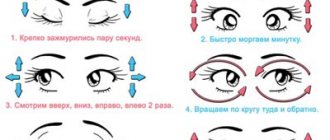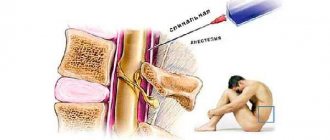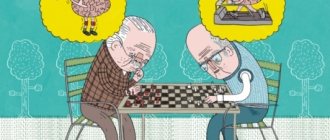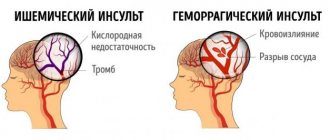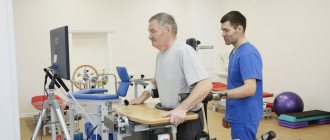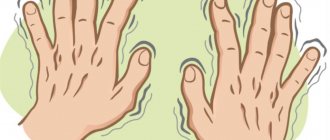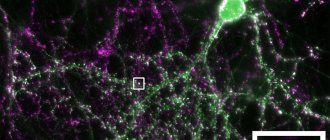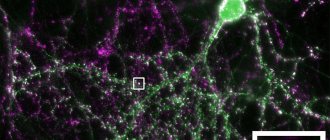The present time is referred to as the age of brain research. One of the most interesting topics in scientific research on this organ has been the ability of the brain to change its structural and functional properties in response to a person's experiences throughout life. For most of history, neuroscientists believed that the basic structure of the brain was predetermined before birth, and the only changes that could occur were degenerative, the result of disease, injury (concussions, TBI). Modern scientists have directed research towards brain restoration. What conclusions did they come to? Is the brain recovering or not?
Research results
Two major discoveries were made by scientists involved in neural networks and human brain research. A study published in Cell Stem Cell reports that Japanese doctors have begun culturing human brains. The journal Science presented material on how chemical destruction was prevented by stimulating the regeneration (renewal) of the brain and spinal neural network.
A neuron is a structural unit of nervous tissue that, under a microscope, resembles a body with tentacles. The task of a neuron is to receive and process information.
The Japanese started from brain cells, which, through appropriate cultivation, were multiplied tenfold and enriched in accordance with the structure of the brain of a human embryo. It was also discovered that in the resulting particles of brain matter, the size of which is 1-2 mm, neural activity, measured in electromagnetic impulses, spontaneously arises. Scientists from the city of Kobe believe that in the future it will be possible to create structures of brain tissue that can be implanted in place of parts damaged by disease (ischemic stroke, multiple sclerosis, etc.) or injury.
Brain neurons are not able to regenerate like their counterparts in nerve endings. Another way to save damaged parts of the brain or spinal cord (damage often leads to serious consequences, including paralysis, coma) is to activate the possibility of regeneration in both main organs of the nervous system. In experiments on mice, a team led by Dr. Che Qiang at Harvard Medical School in Boston was able to answer the question of whether brain cells repair themselves by chemically influencing the process. In mice, scientists used genetic engineering to stimulate the release of a substance called mTOR, which responds to neuronal regeneration. It is present in the newborn, but is destroyed in the adult, especially after injury. Thanks to this process, scientists were able to restore almost half of the damaged optic nerve in a short time (2 weeks). Even the formation of new axons has been recorded.
Che Qian concluded: “We knew that after development ends, networks stop growing due to genetic mechanisms. We believe that one of these mechanisms may also restore regeneration and stop death after injury."
Advances in emergency medicine have ensured that more brain-injured patients survive. Today it is known that the adult brain is capable of rearranging its functional connections, creating new ones, and changing physiological parameters. This phenomenon is called neuroplasticity; it has become the basis for the treatment of central nervous system diseases of various origins.
Fewer cells die and more form in autistic people. It can be said that autism, paradoxically, is a disorder that has beneficial effects on the brain.
What is death?
Most often we imagine death in the form of a kind of switch: one minute you are here, and a minute later there is nothing left, the lights have gone out.
But this is just a caricature of the dying process: even after the heartbeat and breathing stop, sparks of brain activity can continue to flare for a long time. In some cases, even deeply comatose patients—unable to breathe on their own—can maintain simple reflex responses. Their brain waves, whether erratic or weak, are still tracked on the EEG.
Brain death , by contrast, is all, the end. Such a diagnosis signals complete and irreversible destruction of the brain, including the brain stem. Brain-dead people are not in a coma or vegetative state. They have no hope of spontaneous recovery. They are dead.
In many countries around the world, such subjects are classified as "living corpses" (cadavers), says Ira Pastor, CEO of Bioquark (to avoid confusion, this is a man). But there is a problem with this definition.
In theory, brain death is a highly objective and strictly defined medical condition with enormous legal implications. Doctors see brain death in patients as the final signal - time to pull the plug, think about organ donation, invite relatives to say goodbye.
Hippocampus and brain recovery
According to recent data, the human brain contains about 85 billion nerve cells (neurons). It is known that throughout life there is a gradual loss of these cells (they begin to die around the age of 30).
One of the first studies to generate interest in brain plasticity among lay people was conducted by Eleanor Maguire of University College London. She found that London taxi drivers have much more developed hippocampi than bus drivers. The hippocampus is the part of the brain responsible, among other things, for the perception of space. Given the fact that taxi drivers must remember many street names, their placement and connections, it has been suggested that this change is caused by training in spatial orientation, which bus drivers lack.
The problem with this study is that it does not distinguish between innate and acquired function. In this context, interesting results were provided by studies of violinists, which established that these musicians have a much larger surface area of the motor cortex related to the fingers of the left hand. This corresponds to the fact that when playing the violin, each finger of the left hand must make an independent movement. In this case, on the right hand, all fingers work together. The objection to the possibility of a genetic predisposition is countered by the fact that the difference between the organization of the left and right hemispheres is directly proportional to the age at which musicians began to play the violin.
Reorganization of the cerebral cortex has also been observed in people with congenital visual or auditory defects. According to the “use it or loose it” principle, the unused cerebral cortex can be used by another function. Areas originally dedicated to processing visual or auditory stimuli are deprived of them, and their space is used for other functions, such as tactile. Reorganization is the result of the growth of long processes of neurons, axons. After a head injury that damages the brain, neural connections can be restored or replaced with new connections that compensate for the lost function in another part of the brain.
One of the great surprises of recent times is the discovery that the adult brain can, in some areas, create entirely new neurons from stem cells, a process influenced by human experience.
Neurogenesis
Information not known to the general public is that the brain creates new cells throughout life. This phenomenon is called neurogenesis.
The human brain is made up of many parts (but not all of them undergo cellular renewal). Neurogenesis occurs in the area responsible for the sense of smell and in the hippocampus, which plays an important role in memory quality.
Experts have also discovered that damaged brains also produce new cells. Evidence of higher neurogenesis during illness was presented by New Zealand's University of Auckland, which studied people with Huntington's disease, in which a person's mental abilities decrease and uncoordinated movements appear. The creation of new neurons was most intense in the most affected tissues. Unfortunately, this is not enough to suppress the disease. Identifying the conditions under which this process occurs and stimulating it could lead to treatments for Huntington's or Parkinson's disease by transplanting stem cells into the affected areas of the brain.
Medical science is taking its first steps in studying brain neuroplasticity. The next step is a precise description of the conditions under which its changes occur, determining the specific impact on individual functions in human life. Understanding and using knowledge of neuroplasticity also requires analysis of genes associated with the growth of axons or neurons from stem cells.
Medical certificate
Cognitive (i.e. cognitive) functions:
- attention (understands a person’s ability to maintain the level of mental activity necessary for cognition);
- perception (the ability to construct, based on information that enters the brain from the senses, integral images and ideas);
- gnosis (implies the ability to understand formed images and associate them with categories of the mind);
- memory (the ability to remember, store and reproduce provided information);
- intelligence (understands the ability to perform actions with acquired information, i.e. perform analysis, comparison, evaluation, generalization, apply in solving problems);
- speech (implies the ability to communicate through a symbolic sign system, i.e. language);
- praxis (the ability to form and include motor skills in activities, build, memorize and automate a sequence of movements).
Cognitive impairment refers to a decrease in memory, mental performance and other cognitive functions. Comparison is made with the individual norm.
Appear as a result:
- local brain damage;
- decompensation of previous cerebral disease;
- development of acute encephalopathy.
Clinical picture depending on the location of the affected area (brain lobe):
- anterior frontal
– violation of planning and control;
- posterior parts of the left frontal
– Broca’s aphasia, apraxia (the patient can outline a plan of his actions required to perform a complex motor act, but is not able to perform it);
- left parietal
– associative aphasia, ideomotor apraxia (cannot outline a plan of sequential actions to perform a complex motor act), Gerstmann syndrome, body diagram defects, alexia, agraphia;
- left junction of parietal and occipital
– optical-spatial agnosia, acalculia, constructive apraxia (cannot form a whole object from its parts);
- right parietal
– anosognosia, ignoring ½ space;
- left temporal
– Wernkike aphasia and/or amnestic type;
- right
– amusia, dysprosody, arrhythmia;
- occipital left
– optical-object agnosia, isolated alexia;
- right occipital
– facial, visual color agnosia;
- hippocampus, thalamus, mediobasal frontal
– amnesia.
Symptoms:
- deterioration in concentration;
- defects in executive functions in the form of decreased intellectual flexibility (manifested by inertia, perseveration) and cognitive control (impulsivity appears);
- constructive dyspraxia;
- bradyphrenia;
- memory impairment in terms of incomplete reproduction.
The medical and social significance of the deviations lies in the decrease in the patient’s performance and the emergence of problems with everyday and social adaptation after a stroke. This negatively affects the quality of life of both the elderly and their family members. Due to a decrease in the effectiveness of neurorehabilitation, a poor prognosis regarding the completeness of functional restoration is given. The effectiveness of therapy and prevention of the main and concomitant diseases also decreases. As a result, life expectancy decreases.
The importance of neurogenesis
Recent estimates indicate that the hippocampus produces about 700 new brain cells every day. At first glance, this number does not seem large, but the creation of each new neuron is very important, especially for the psychological state of a person. If the formation of new cells stops, depression and psychosis begin to appear. Restoration of brain neurons is important for learning, memory, intelligence (study of certain places, orientation in space, quality of memories).
Recent scientific research has shown that it is possible to improve the production of new brain cells on your own, i.e. at home. What types of activities have a positive effect on the formation of neurons?
Neuron production increases:
- education;
- sex;
- training of cognitive functions;
- mnemonics;
- physical activity (significant help);
- nutrition (regular meals, longer pauses between meals)
- vitamin P (flavonoids);
- omega-3 (also a good antidepressant).
Neuron production decreases:
- stress;
- depression;
- lack of sleep;
- diets rich in saturated fats;
- anesthesia used during surgery;
- alcohol;
- drugs (especially Amphetamine);
- smoking;
- age (with age, neurogenesis continues, but slows down).
Neurons can die in a number of diseases:
- epilepsy – cell death occurs during an attack;
- cervical osteochondrosis – neurons die due to poor circulation;
- hydrocephalus;
- encephalopathy;
- multiple sclerosis;
- Parkinson's disease is a disease characterized by impaired mobility of the legs, arms, and cerebellar signs (due to damage to the amygdala);
- Alzheimer's disease is a disease that leads to dementia, a disorder of speech functions (due to damage to speech receptors).
Neurons may temporarily stop renewing when you take certain cancer drugs. Therefore, after treating cancer with pharmaceutical drugs, people suffer from depression. After restoration of neurogenesis, depression disappears.
It is safe to say that the formation of new brain cells occurs naturally in healthy people. However, whether the process will speed up or slow down largely depends on the person himself.
Literature:
- Endogenous intoxication syndrome (manual) / S. G. Musselius. — Ed. 2nd, revised and additional - Moscow: Author's book, 2019. - 356 p.
- Neurodegenerative diseases: chemical and medical-biological aspects / V. G. Granik. - Moscow ; St. Petersburg: Nestor-History, 2014. - 467 p.
- Psychotherapy in practice: technology of the psychotherapeutic process: educational and practical guide to psychotherapy and psychological counseling / I. S. Pavlov. — Moscow: Culture: Acad. project, 2012. - 511 p.
- Nootropic drugs in complex therapy of chronic alcoholism / Potupchik T., Lopatina T., Lopatin V. / 2021 / Doctor
What supports the creation of new neurons?
In addition to the ability to renew itself, the brain is constantly changing, adapting to the external environment, optimizing its activity in accordance with human living conditions. In case of injury, severe intoxication with poisons, medications, or micro-stroke, circulatory disturbance occurs (blood flow to the brain decreases), hypoxia (oxygen starvation) develops, and functions from the affected areas can be transferred to undamaged segments, from one hemisphere to the other. This way a person is able to learn new things and create new habits at any age.
The brain is affected by everyday life, ways of acting, and constant habits. To maximize the manifestation of his wonderful abilities, activity is required, stimulating brain activity in all possible ways.
Electrical stimulation
Targeted electrical stimulation supports the cooperation of neurons in a specific center. This is a non-invasive, drug-free therapy performed by passing a low current through electrodes placed on the scalp. Electrical stimulation can restore brain activity and restore neurons, selectively activating protective mechanisms in the brain, causing an increased release of endorphins and serotonin.
Physical activity
Physical activity and the process of neurogenesis are closely related. As heart rate and vascular blood flow increase during exercise, the levels of factors that stimulate neurogenesis increase. Physical activity also helps release endorphins, reducing stress hormones (especially cortisol). At the same time, testosterone levels increase, which also promotes neurogenesis.
To prevent the negative effects of aging on both the body and brain, physical activity is an excellent choice. It combines both of these goals. You don't have to lift dumbbells or do exercises at the fitness center. Regular vigorous walking, swimming, dancing, cycling is enough. These actions strengthen weakened muscles, improve blood circulation and mental abilities.
Any action aimed at reducing tension and stress promotes neurogenesis. Choose an activity that suits your preferences.
Freshness of mind
There are many ways to regenerate neurons while maintaining a fresh, sharp mind. Various actions can help with this:
- reading - read every day; reading makes you think, seek connections, supports the imagination, arouses interest in everything, including other possible types of mental activity;
- learning or developing knowledge of a foreign language;
- playing a musical instrument, listening to music, singing;
- critical perception of reality, study and search for truth;
- openness to everything new, sensitivity to the environment, communication with people, travel, discovery of nature and the world, new interests and hobbies.
An underrated yet effective method of supporting brain activity is handwriting. It supports memory, develops imagination, activates brain centers, coordinating the movement of muscles involved in the writing process (up to 500). Another advantage of handwriting is maintaining elasticity, mobility of joints, hand muscles, and coordination of fine motor skills.
Nutrition
In connection with the topic at hand, it must be said that the human brain is 70% fat. Fat is a part of every cell in the body, incl. brain tissue, where in the form of myelin it is the insulation surrounding nerve endings. Brain cells create it from sugar, i.e. do not wait for fat to come from food. But it is important to eat healthy fats that do not contribute to the occurrence and development of inflammation. Health benefits come primarily from fats containing omega-3.
Many people, hearing the word “fat,” involuntarily shudder. In an attempt to maintain a slim waist, they buy low-fat products. These foods are unhealthy, often even harmful, because fat is replaced with sugar or other ingredients.
Eliminating fat from your diet is a mistake. Its restriction must be strictly selective. Hydrogenated fats found in margarines and industrially processed foods are harmful to the body. Unsaturated fatty acids, on the contrary, are beneficial. Without fat, the body is unable to absorb vitamins A, D, E, K. They are soluble only in fat, which are of great importance for brain activity. But you also need saturated fats found in animal sources (eggs, butter, cheese).
Low-calorie nutrition is good, but it should be varied and balanced. It is known that the brain consumes a lot of energy. Provide it in the morning. Oatmeal with yogurt and a spoon of honey is an ideal breakfast option.
How to restore the brain with the help of products and folk remedies:
- Turmeric. Curcumin affects neurogenesis and increases the expression of the neuropathic factor, which is necessary for a number of neurological functions.
- Blueberry. The flavonoids contained in blueberries stimulate the growth of new neurons and improve the recognition functions of the brain.
- Green tea. This drink contains EGCG (epigallocatechin gallate), which promotes the growth of new brain neurons.
- Brahmi. Clinical studies examining the effects of the brahmi plant (bacopa monnieri) on brain function showed that after 12 weeks of use, volunteers significantly improved verbal learning, memory, and the speed of processing received information.
Three C's:
- Sun. Healthy exposure to sunlight on the body is 10-15 minutes a day. This promotes the formation of vitamin D, affects the secretion of serotonin, the growth of brain factors that directly affect neurogenesis.
- Dream. Its abundance or deficiency significantly affects brain activity. Lack of sleep causes inhibition of neurogenesis in the hippocampus, disrupts the balance of hormones, and reduces the degree of mental activity.
- Sex. Sexual activity increases the secretion of happiness hormones, endorphins, reduces anxiety, tension, stress, and promotes neurogenesis.
Meditation
The positive effects of meditation on the human brain and overall health have been scientifically documented. Regular meditation has been shown time and again to increase gray matter growth in several areas of the brain, including the hippocampus.
- Meditation stimulates the development of certain cognitive abilities, especially attention, memory, and concentration.
- Meditation improves understanding of reality, focus on the present, and prevents the mind from burdening the mind with fears of the past or future.
- During meditation, the brain works in a different rhythm. In the first phases, increased activity occurs, which is manifested by a higher amplitude of α-waves. During the process of meditation (during the following phases), δ-waves arise, associated with the regeneration of the body and rehabilitation after illness.
- Meditation done in the evening stimulates the brain, increasing the production of melatonin, which is part of the process of neurogenesis. The body relaxes.
Monoatomic gold
Ormus, monoatomic (monatomic) gold is often associated with increased intelligence and overall brain health. David Hudson, who discovered ormus and began analyzing it, said that the substance is capable of restoring the body at the genetic level. Ormus professionals also claim that monoatomic gold can correct DNA errors and even activate dormant DNA.
Basics of cognitive rehabilitation after stroke
Based on the early systematic approach given in the schools of Anokhin, Vygotsky, Luria and others.
Basic principles:
- stimulate natural mental recovery;
- training of individual defective cognitive functions and familiar everyday activities;
- assistance in compensating for the lack of certain cognitive functions and limited everyday skills;
- use of compensatory equipment and assistance from third parties;
- transformation and structuring of the environment.
Restorative training methods are divided into two types. The first is modal-nonspecific
aimed at training neurodynamic parameters and thinking, verbal and non-verbal influence. If necessary, special software is used to stimulate neurodynamic parameters. Research is currently underway to clarify the effectiveness of targeted computerized indirect stimulation of certain areas of the brain for the development of narrowly targeted rehabilitation techniques. At the moment, it is not known for certain whether training one cognitive function using computer programs helps improve it, or whether the training affects other cognitive brain functions.
Modal-specific
The methods are based on the restoration of cognitive functions due to the preserved modality with a gradual dosed complication of the action program.
A set of non-drug methods for restoring cognitive impairment includes:
- diet: eating enough fresh fruits and vegetables, vegetable oil, fresh fish and limiting the consumption of foods rich in cholesterol and table salt, reducing excess weight;
- cognitive gymnastics;
- cognitive training;
- psychological and behavioral correction methods, where efforts are mainly aimed at improving sleep, spiritual state with the help of special practices, art and music therapy;
- psychotherapeutic techniques;
- meditation and yoga classes.
Cognitive gymnastics
This is a set of special physical exercises, including coordination movements and elements of acupressure self-massage. They help establish connections between the kinesthetic, visual, optomotor and auditory systems. The exercises are conditionally divided into groups:
- General developmental.
- Aimed at developing coordination (bodily).
- To stretch the muscle tissue of the body (stretching).
- To increase body energy and relaxation.
First, the exercises are performed lying down or sitting on a chair. The complex is gradually expanding. The general condition of the patient and his well-being are taken into account. The patient is offered exercises from a standing position, with support on a chair, without support and while walking. 1-2 minutes are allotted to perform each exercise at a slow and smooth pace. Gymnastics are carried out daily, taking into account the developed program and the general condition of the patient. One session in a gentle motor mode for 10-15 minutes, a gentle training session for 15-20 minutes, a training session for 25-30 minutes. The lesson consists of 3 parts: preparatory, main and final.
Indications for cognitive gymnastics are cognitive deficit, decreased attention and memory impairment. Contraindications – there is no verbal contact with the patient, there is total aphasia, general health is poor.
Cognitive group training
Conducted in groups of 12-15 people. Duration – 75-90 minutes. The specialist must take into account that the presence of people of the same sex of the same age negatively affects the elderly. They are more likely to attend classes (especially older adults with severe cognitive impairment) if the group contains only peers of the same sex.
When forming a list of participants in each group, the severity of cognitive defects is taken into account. It is advisable to attend lessons for patients with varying degrees, since this stimulates natural competition, and therefore increases work activity. However, the specialist must adhere to an acceptable threshold of emotional stress in order to avoid the opposite effect.
If the lesson involves written assignments, then the material is given to each group member in printed form along with clear instructions. How to perform the exercise is also explained orally. This is necessary so that everyone understands the essence correctly.
Each lesson contains a variety of exercises that are different from each other. When drawing up a program, individual preferences and treatment dynamics are taken into account. At the end of the work, errors are analyzed, but attention is focused not on “failure”, but on the fact that the patient will definitely succeed. To diversify the lesson, game forms of presenting material and educational games are used. This helps not only relieve psychological tension, but also improve the communication skills and mood of the participants. The training is carried out in conjunction with psychopharmacotherapy.
Goals:
- Correct memory through restructuring and integration with perception and thinking. A variety of mnemonic methods are used.
- Activate processes of all types of attention.
- Develop and train logical thinking skills that are responsible for the formation of focus, consistency and flexibility of mental conclusions.
- Develop imaginative thinking, without which associative memory cannot be restored.
- Involve each group member in the training process, which helps improve communication skills.
- To overcome the social isolation of patients, to develop the skills of socially adapted behavior in a group.
- Expand your general horizons to motivate you to engage in other forms of work and leisure activities.
- Improve verbal skills by increasing your active vocabulary.
- Involve each group member in creativity that promotes the search for original cognitive and behavioral tactics.
- Learn to switch attention from negative emotions to productive activity.
- To create a favorable emotional atmosphere, the patient should feel satisfied with the results of his work. This allows one to overcome intellectual and social anhedonia.
- Train regulatory functions by observing a change in mental work with rest and other types of active activity.
- Develop criteria for assessing the dynamics of the effectiveness of cognitive restoration.
- Form motivational attitudes for individual work in everyday life.
Lesson order
The lesson begins with “Getting Acquainted”, when each participant introduces himself and answers the specialist’s questions about his preferences. The next person must introduce himself and also tell about the previous member of the group: his name, age, what he answered. This helps to start a conversation, train your memory, and relieve tension. Next come light physical exercises aimed at warming up the muscles (warm-up).
The main part is exercises for all types of cognitive functions: attention, memory, thinking and regulatory processes. Some tasks are labor-intensive and require participants to concentrate or jointly search for the optimal solution.
The end of the lesson is emotional relaxation in a playful way. For example, “Russian Lotto” or “Trimino”.
Examples of exercises to develop attention
- Closing your eyes, mentally draw the numbers from 0 to 9, only the tip of your nose acts as a brush.
- The specialist shows an unusual object for a short time and hides it. Patients describe it in detail.
- Participants must count from 1 to a given number in a circle. You need to focus on those numbers that fit certain criteria.
- Count out loud in a circle from 1 to a certain number. When a number appears, for example, with “2”, say not it, but the phrase “I won’t get it wrong.” The count starts again.
- Participants are given clippings from magazines (everyone's interests are taken into account). A person must carefully read the article and cross out words that fit the given criteria. At the end, everyone is asked to talk about what they read (they are not warned about this requirement in advance).
- Group members sit with their eyes closed. The patient is asked a question such that the answer provides the opportunity to notice small details in the perception of others.
- Closing your eyes and ignoring extraneous sounds and thoughts, think first about your plans for the evening, then about the book you read the other day and, then, remember a bright positive event in your life.
- Each participant is given tables from a set of letters. Words (nouns only) are hidden among them. The participant must find them.
Examples of memory development exercises
- Sitting with your eyes closed, imagine your room. 10 words are voiced by the presenter. They should be remembered and placed in the presented room in the order stated.
- Under dictation, a series of words are written down on a piece of paper in a column. The participant must select a different association word for each of them and write it down side by side, but in a different order. Then close the first column and restore it using associations.
- A mini-story is told so that participants can form strong visual images to remember key words.
- First, the participants sort out among themselves what associations they have in relation to this or that number. The next stage is when the presenter announces the sequence of names of these items. Participants must recreate the digital sequence.
- You need to make a diagram of a known object from memory, for example, the location of rooms in an apartment.
Examples of exercises for training figurative and logical thinking
- You need to mentally transform the proposed Chinese characters into objects, people or phenomena
- The group is divided into 2 teams and seated opposite each other. One is given cards with terms. The team must work together to explain to the opponents the functional definition of each concept. The second team's task is to guess. Then there is a change of roles.
- A long word is given. From its letters, participants must create the maximum number of new ones.
- The group is divided into teams of 3-4 people. Large fireplace matches are used. From these, equalities are laid out on the table according to a certain condition. The team’s task is to correct the equation or make new ones.
- You are given 2 words, you need to make a logical chain with them. Performed in turn by all participants.
- Letters are selected from the Russian alphabet and assigned numbers from 1 to 9. The participant names the digital combination, and other members of the group must guess the word.
- A set of words of various semantic similarities is given. From these, patients must write a short story that is logical and includes all the words.
Riddles, logic, puzzles
These are fun exercises that allow you to train all cognitive functions.
"Filward." Each person is given a sign with letters. The presenter asks riddles on a topic that is interesting to all participants. The clue words need to be found and marked in the table.
What not to do?
Mental health (according to experts) is more important than the physical condition itself. So how do you support brain function? First of all, you need to know what harms him.
Contaminated air
The brain consumes a significant amount of oxygen, which is necessary for it to function properly. But modern people are constantly exposed to polluted air (vehicle exhaust, dust from industrial production). People from larger cities experience frequent headaches and short-term memory disorders. Longer exposure to polluted air causes permanent changes in the brain.
Alcohol and cigarettes
In addition to causing cancer, heart disease and a range of other health problems, alcohol and nicotine can impair brain function, new research shows.
Unlike alcohol, nicotine compounds do not damage brain cells directly, but lead to other neurological disorders, including. to multiple sclerosis. Long-term consumption of alcohol, prolonged binges, in addition to delirium tremens, cause a chemical imbalance leading to structural disorders. Alcoholics have been shown to have decreased cranial volume.
Lack of sleep
The body, including the brain, recovers most during sleep. Long-term sleep deprivation can cause damage to a vital organ. The body does not have time to create new neurons, and old ones lose the ability to interact with nerve cells. For insomnia caused by overexertion, it is better to take a sleeping pill.
Relaxation for neurons
There are several points on the head that stimulate the overstressed nervous system. Place the fingers of both hands just above your ears and gently massage the skin, creating light pressure. Do the same on the top of the head. Finally, massage your temples and masseter muscles on your cheeks.
Don't cover your head
And one interesting thing. The fact that the brain needs sufficient oxygen is explained above. But did you know that children can have problems with this? They like to hide under the covers, often falling asleep this way. During sleep, the amount of carbon dioxide exhaled increases. This reduces oxygen levels, which interferes with the proper functioning of the brain.
This also applies to adults. Provide sufficient fresh air while sleeping.
Change your brain
The scientists' findings are significant for everyone. Research shows that people of any age can learn new things and form new habits. What we learn in life, who we surround ourselves with, what and how we decide to do, how we think, determines who we are, what our vision of the world is. The more a person is open to new stimuli and knowledge, the more he develops his brain.
Thanks to a proactive approach, habitual but disadvantageous stereotypes can be eliminated. Using various psychological methods, it is possible to replace “trampled” pathways in the brain with new ones. You can transform anxious thought patterns into realistic ones, and replace a negative attitude towards the world with a positive one. It all depends on the restoration of the brain and on the person himself.
